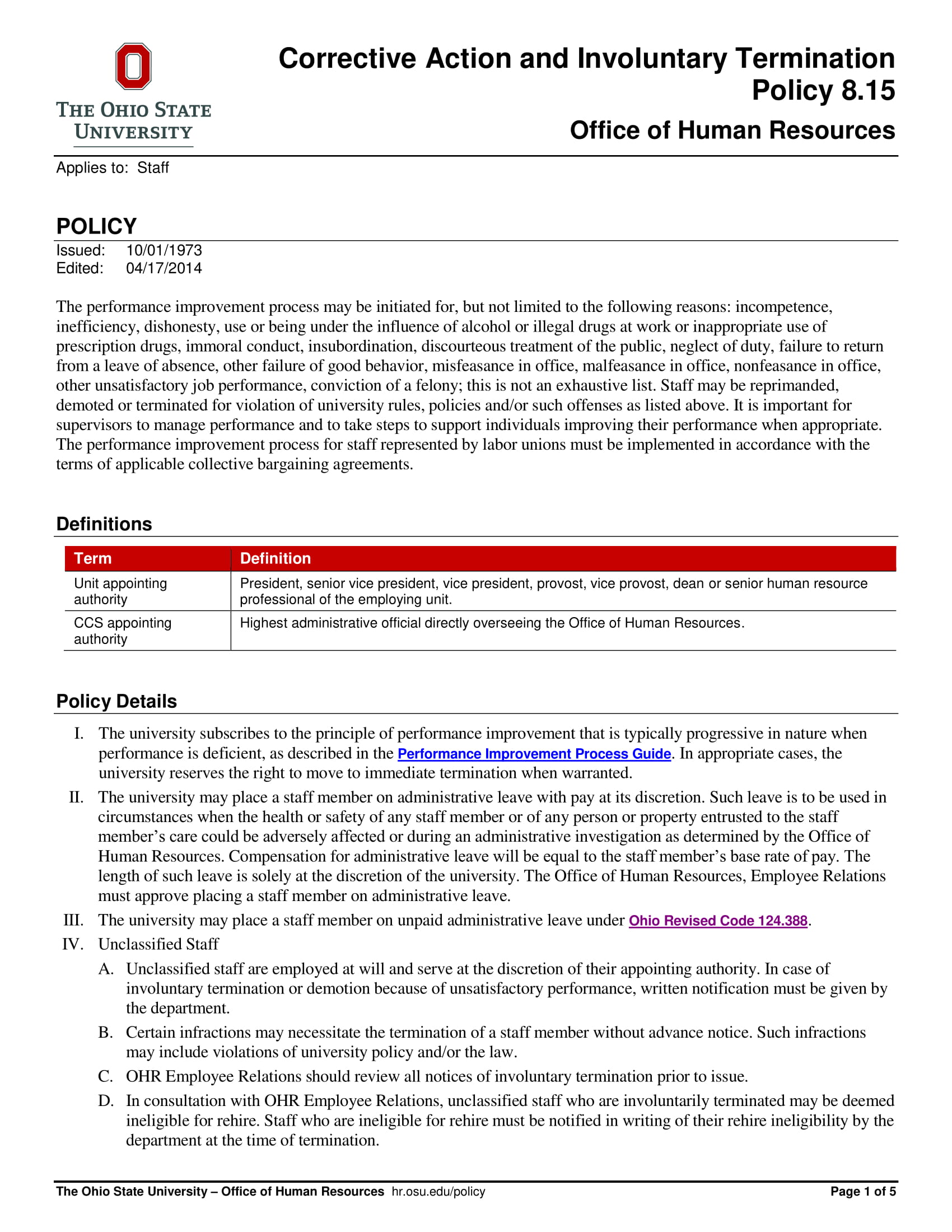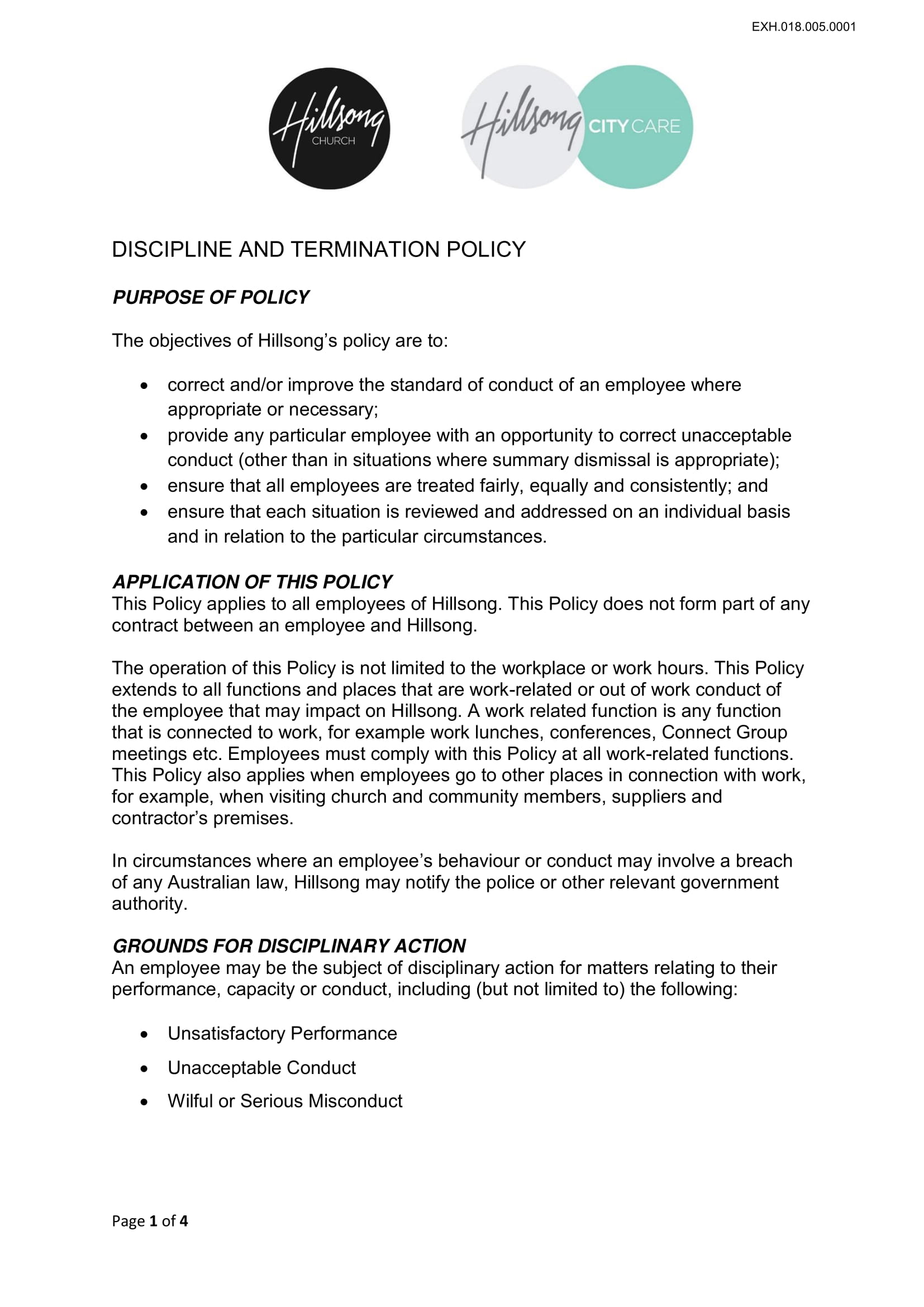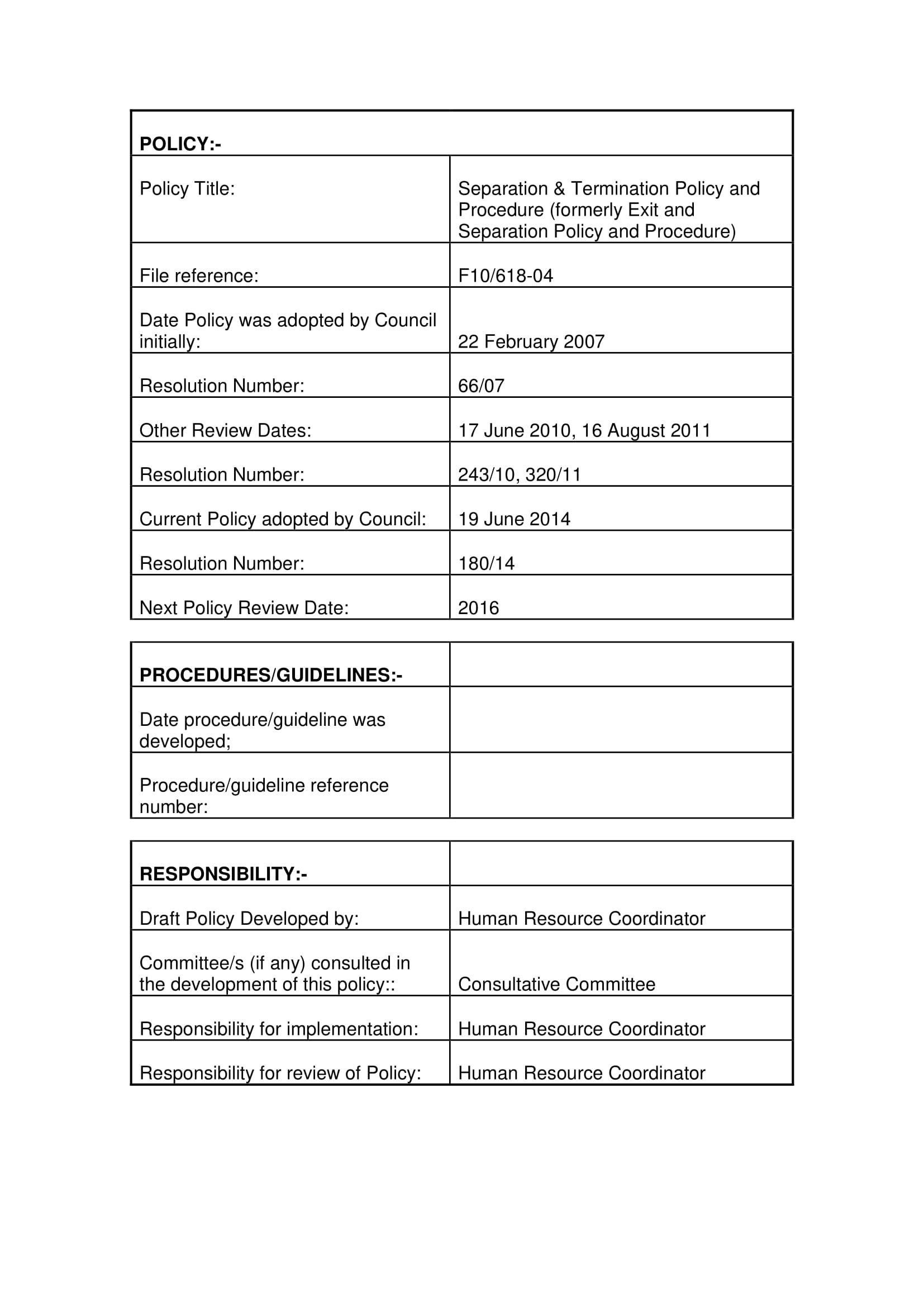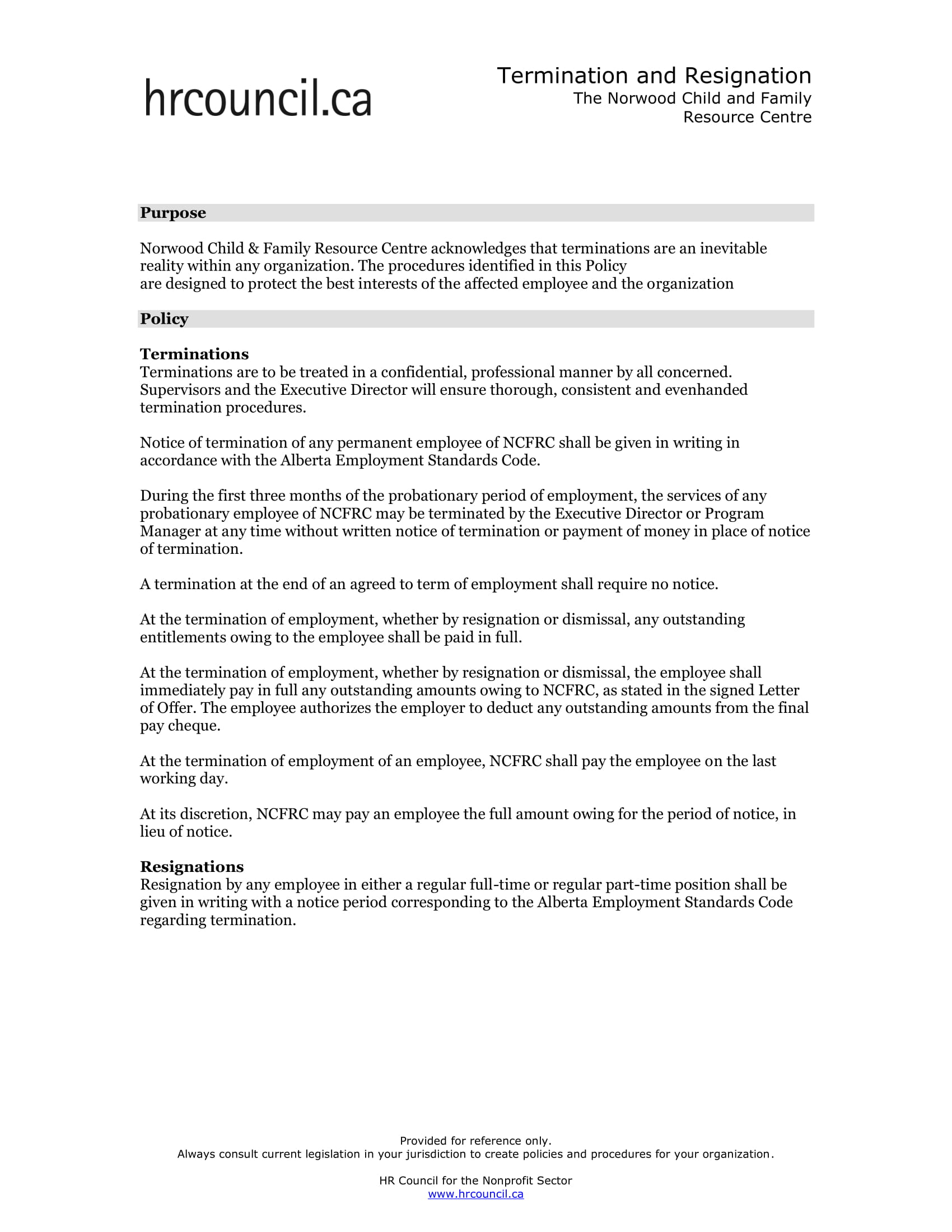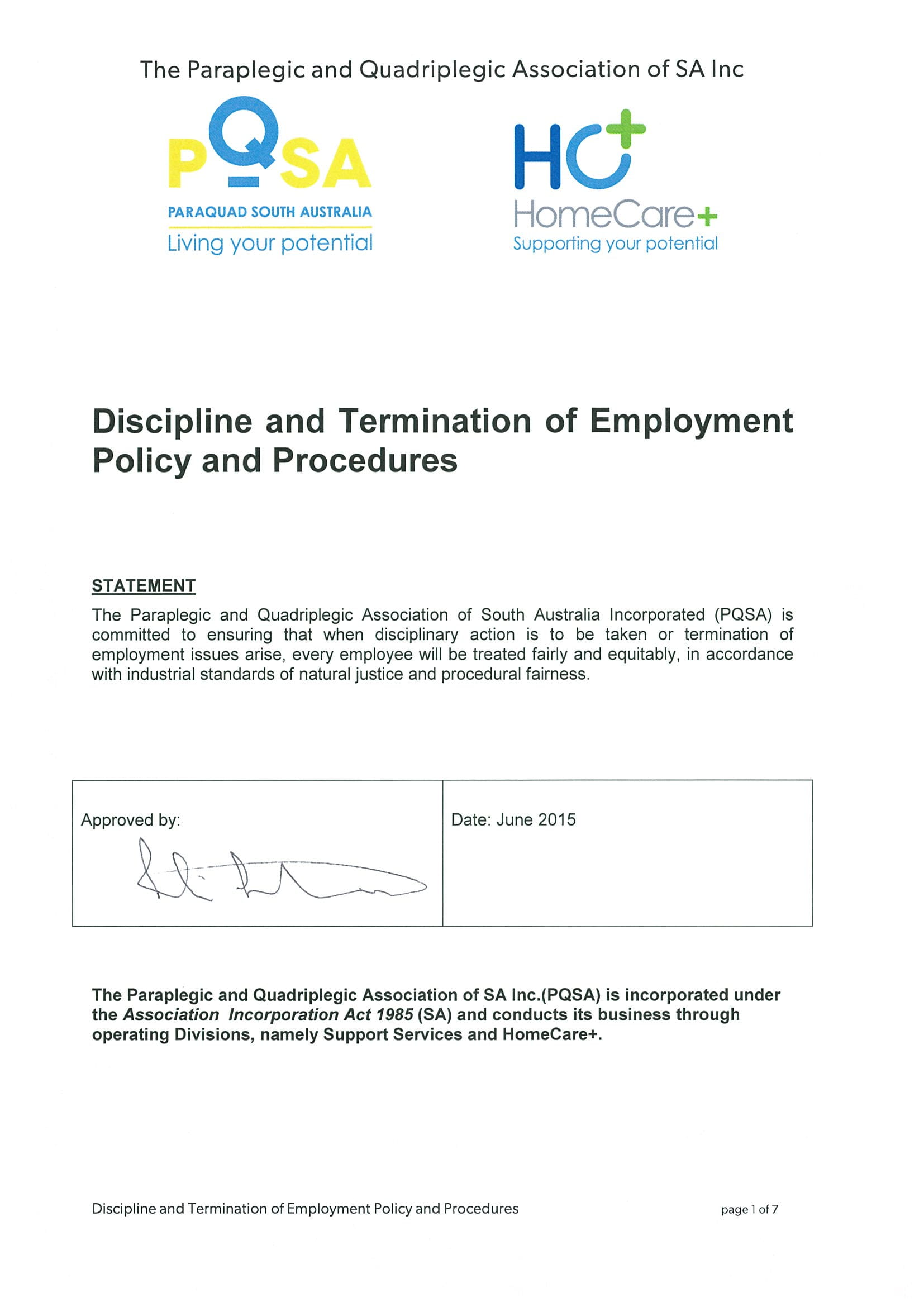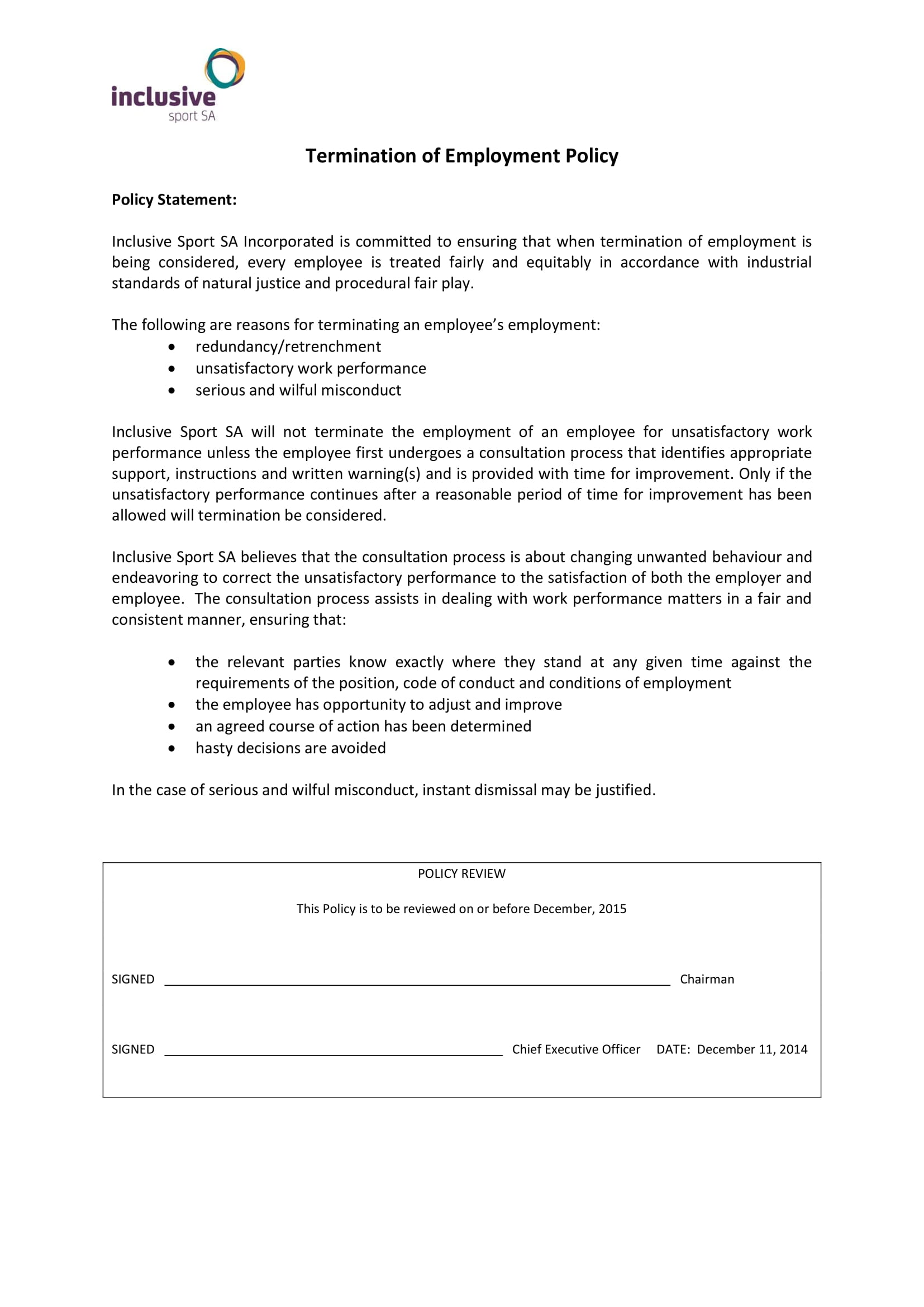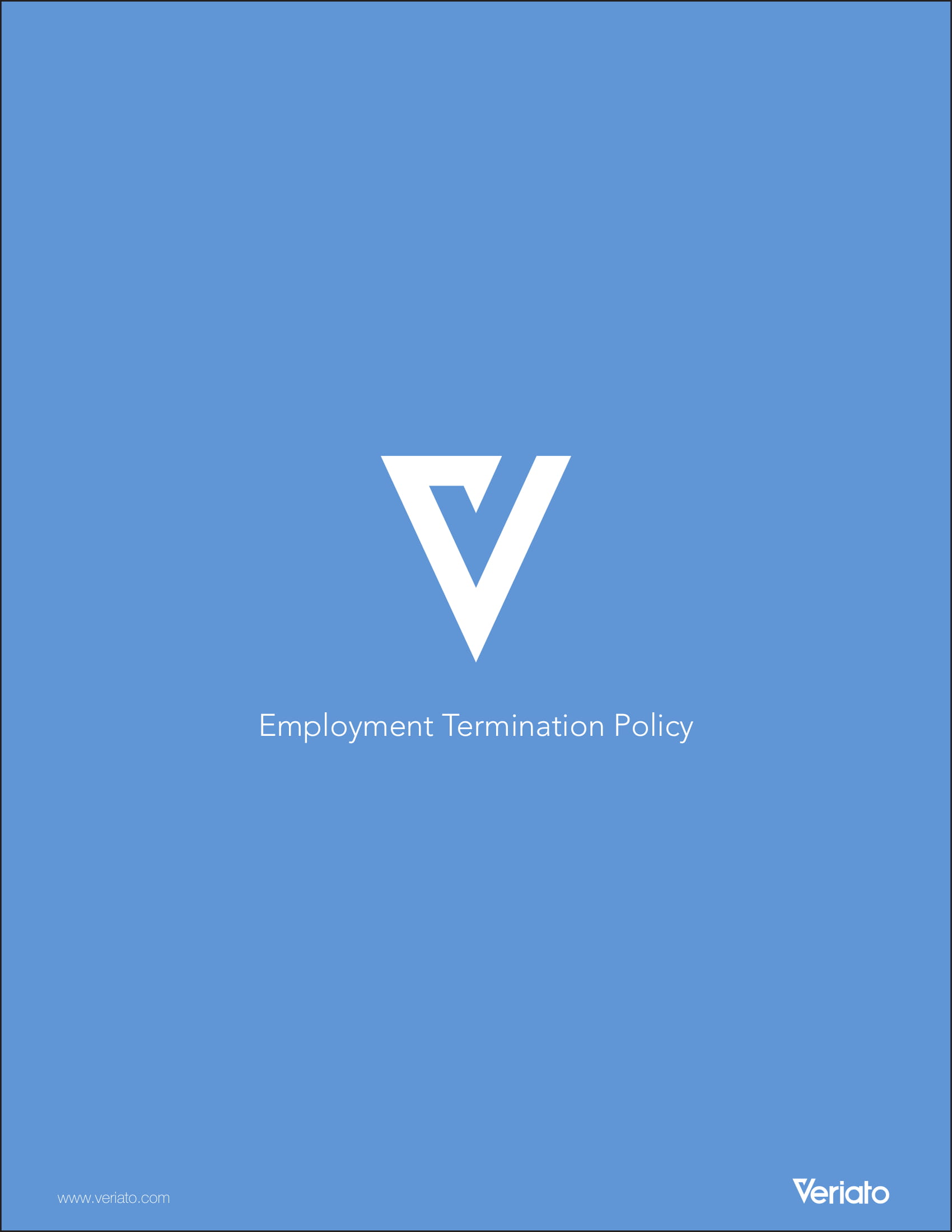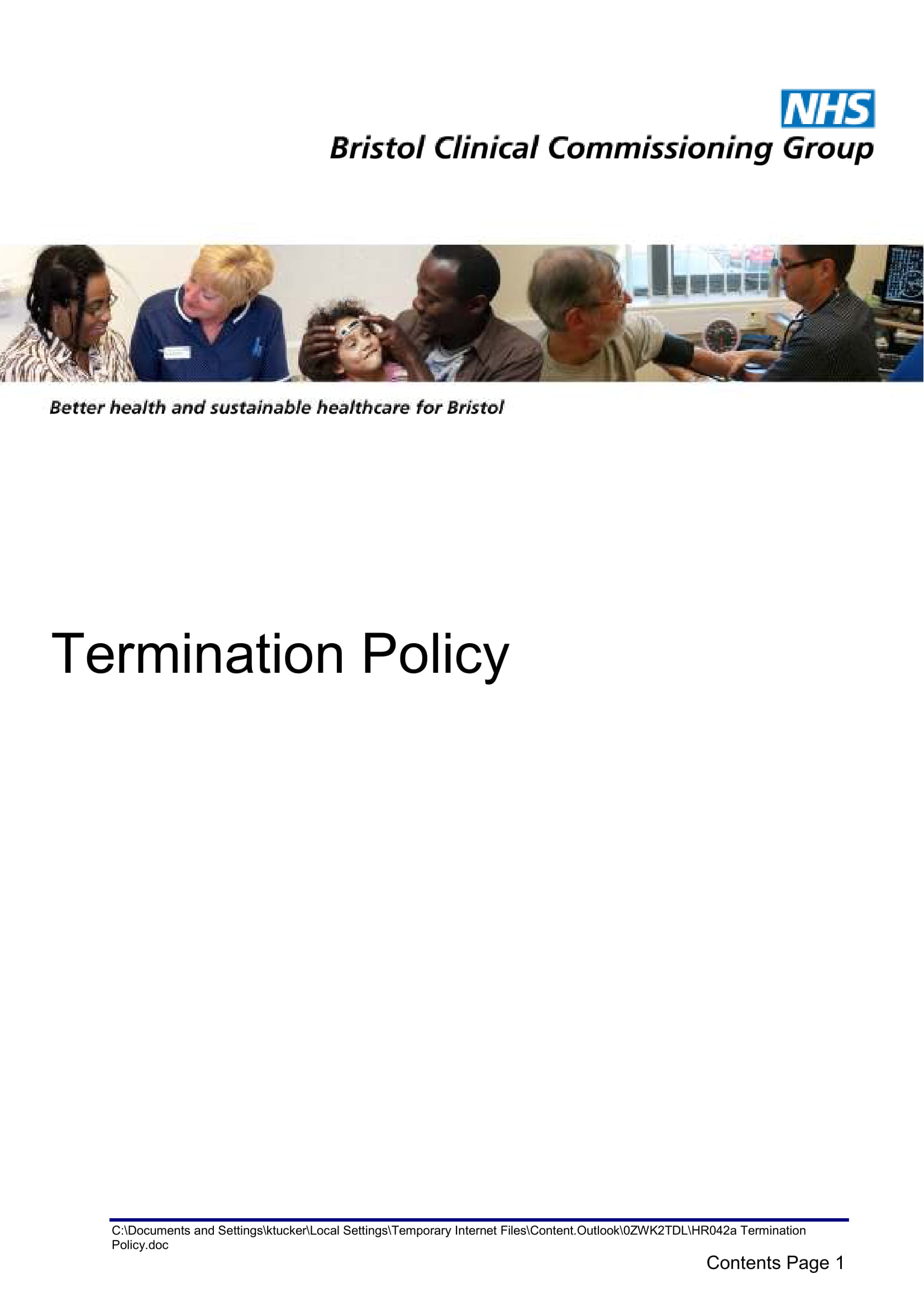7+ Termination Policies and Procedures Examples to Download
Can the decision for employment termination still be changed? Does an employer need to provide notice of termination? These are only a few of the questions that you can easily answer if you will come up with comprehensive termination policies and procedures. When you are in the process of terminating an employee, you have to make sure that you will follow the regulations of the company and the specifications stated in the contract of the employee. It is essential for businesses to have a legal, transparent and unbiased termination procedure to ensure that employees will be terminated objectively.
Corrective Action and Involuntary Termination Policy
Discipline and Termination Policy Example
Having termination policies and procedures can help the management and the human resource department assess situations where termination is considered as the best option to execute. We have listed several termination policies and procedure examples so you can identify the details that you can also incorporate in your own business’ policy and procedures for termination.
Steps in Developing a Termination Procedure
How you will terminate an employee can reflect the management style of your business. Even if you will already be parting ways with the employee that will be terminated, it is still essential for you to protect the rights of the individual. Here are the steps that you can follow if you want to develop a termination procedure that promotes privacy and confidentiality within the entire transaction:
1. Identify the objective or main purpose of the termination procedure creation. You have to be aware of all the agreements that you have made with the employee so you can ensure that workplace and employment regulations are followed. This will also help the business comply with legal provisions, standards and legislation that can lessen possible court trials should the employee file for a case after his or her termination. You may also see creative ways to structure your hr department.
2. Be specific in developing the scope, limitations and boundaries of the termination procedure that you are currently developing. This can make it easier for all entities involved in the transaction to have a clearer overview of the processes that they need to regulate and implement. You may also like hr memo examples & samples.
3. Know the reason for the employment termination. Is it because of retirement, voluntary exit or resignation, death, misbehavior and misconduct or unsatisfactory employee performance? Knowing the root cause of the termination can help you be well-guided on how to lay all the essential procedures for the particular termination. You may also check out best human resource policies and practice.
4. List down the termination procedures accordingly. Again, you have to be specific when it comes to designing these procedures as there are different types of termination that an employee can be subjected into. More so, you have to make sure that your termination procedures are laid out in an organized and realistic manner. A basic termination procedure can be as follows:
- Reviewing the case where the termination is suggested to be done
- Gathering of evidences for termination
- Evaluating the proofs of misconduct or other issues that resulted to the termination decision
- Finalizing the decision of the management and the human resource department to terminate the employee
- Giving the notice of termination through an employee termination letter
- Requesting for a termination meeting with the concerned entities
- Discussing all the final responsibilities of the employee to the business which includes the return of all company properties
- Signing of the employee’s clearance form
- Handing of the final paycheck of the terminated employee
5. Specify steps when a review of the termination decision is requested by an employee. You have to ensure that you can present evidences and proofs of the reason for the termination. Metrics and other measures can also be presented. You might be interested in reasons why hr is critical to your company’s success.
6. Once you have already listed the procedures for termination and decision review provision, the next thing to do is to delegate or disseminate all the responsibilities of point persons that will be involved in the termination. This can promote a smooth flow of termination process. You may also see importance of human resource management.
7. Lastly, come up with a general time frame that can be followed once the termination is already final and scheduled. You can change this time frame depending on the needs and demands of particular termination instances.
Access Authorization and Termination Policy
Termination of Employment Policy and Procedure and Fixed Term
How to Effectively Implement HR’s Termination Policies
Termination policies can protect the business from abusive, under performing and misbehaving employees. Through these policies, companies can secure their intentions and the safety of the business as well as its continuous operations. However, not all termination policies developed by human resource departments from different business establishments work the same. The execution of these policies can actually affect their efficiency and high-usability. Here are some ways on how you can effectively implement the policies of your human resource department with regards termination procedures and processes:
1. Properly document the entire process of termination. Having written notices, letters, and agreements can help the business gather enough proofs of a just and fair termination. Aside from these, proofs of the reasons why the employee has been terminated should also be kept together and recorded. You may also see things every hr professional needs to do to succeed.
2. Make sure that the procedures of the termination as well as the policies relating to the matter are known and understood both by the employer and the employee. Misleading and vague details must be addressed and discussed to ensure that all parties have the same understanding of each termination policy and clause. You may also like human resource budget examples.
3. Come up with termination guidelines that promote the best termination practices. You have to make sure that you will consider the privacy of the employee when executing a termination process. More so, you have to be aware of the legalities that are associated or aligned with the termination. You may also check out hr checklist examples & samples.
4. Justify the termination of the employee. It is essential for the rights of both the business and the employee to be looked into within the processes of termination. Policies serve as guides and they can only be strengthened if the company can easily present all the regulations and metrics that they considered before coming up with the decision to terminate one of their workforce. You might be interested in examples of hr forms.
5. Always include your termination policies in the employment contracts and handbooks of the employees. This way, they can have references that they can look into whenever they would like to review the scope of the termination policies, procedures and regulations of the company.
6. Develop termination meeting checklists that can guide discussions within the different phases of the termination. You can use this during the initial meeting of the human resource department and the employee, when the employee would like to appeal with the decision that the management came up with, and when it is already time for the employee to legally separate from the company.
Separation and Termination Policy and Procedure
Termination and Resignation Policy, Guidelines and Procedures
How to Maximize the Usage of the Company’s Termination Policy and Procedures
Creating a termination checklist can help your company be well-guided within the entirety of the termination procedures. This can also list down all the policies that you have considered, the steps that you need to follow to come up with a smooth termination process, and the documents and forms that you need to prepare for the termination. Aside from that, there are also other items that can help you organize your business’ termination policy and procedures while making the most out of the advantages that these can provide you with. Listed below are some of the ways on how businesses can maximize the potential, effectiveness, benefits and usage of their termination policy and procedures:
1. Know whether the position vacated by the terminated employee will still be vacated or will be totally removed from the line-up of the workforce required and demanded by the business and its operations. When terminating an employee, you already have to prepare once he or she leaves the position. The operations of the business should not suffer due to lack of workforce. You may also see are certifications needed for an hr career?
2. Create a termination policy and procedures that can be easily understood by the employees. Use a simple language when presenting the policies for termination. Moreover, the tone that you will use when discussing the termination procedures must be formal and professional. You may also like types of hr forms you need for small businesses.
3. Seek for legal advice whenever you are already done creating the draft of your company’s termination policy and procedures. It is important for professional suggestions, comments and recommendations to be considered as these can help you be aware on how you can efficiently use, develop and improve the policies and procedures that you have come up with. You may also check out what you need for management development in human resources.
4. Ensure that the human resource department of the company and the entities involved in the implementation of the termination policy and procedures have the skills, insights, and resources that will allow them to execute the content of the policies in an effective manner. An outstanding termination policy will be nothing if it is not realistic and attainable. You have to make sure that you will first evaluate the ability of the company’s point persons before using termination policy and procedures in actual termination processes and activities. You might be interested in hr resume examples.
Discipline and Termination of Employment Policy and Procedures
Termination of Employment Policy
Tips in Making a Termination Policy and Procedures
Having termination policies and procedures can help the business balance the rights of the company and the rights of the employees. If you can create a thorough termination policy for your business, then you can ensure that termination procedures are backed-up by a strong foundation. A few of the tips that you can follow if you ant to make a termination policy along side termination procedures for your business include the following:
1. Properly define the policies that you have made. Be specific with the discussion of each simple policy items and ensure that your employees are well-informed with how these policies can be implemented.
2. Have an official separation process that your business can refer to every time there is a termination that will occur. Again, base the steps within this process on the reason for termination. Ensure that you can also provide a copy of this process to the employee who will be terminated or at least give him or her an idea of how the termination will go. You may also like examples of it policies and procedures.
3. Find time to talk with the employee who will be terminate. May it be voluntary or involuntary termination, talking things through can make it easier for both parties to understand one another. Aside from providing a termination notice and the final termination letter, make sure that you can schedule meetings and mediums of discussion so that the employment of an individual can end clearly and properly.
Employment Termination Policy
Termination Policy
Usage of References When Creating Termination Policy and Procedures
Different companies have different regulations when it comes to termination. As simple as the phase of the termination where the final termination letter will be given can vary depending on what your company would like to execute. Even if there are common practices and procedures, there are still different ways of implementation depending on how the business developed its termination policies. With this, you have to be aware that using references will only work if you can tweak certain information presented in examples and templates so that the document can fit the regulations, rules, and procedures set by your business.
Just as how references help create an impressive employment contract, examples and templates can also help you develop an outstanding termination policy and procedures. What you need to do is to identify the items that you can use and know which information are essential to be changed, removed or added. Once you already have a grip on how to use these references, then it is for sure that you can have an easy time developing different kinds of human resource and business documents. Download our termination policy and procedure examples now and see how these can help you create a termination policy and procedure that works for the advantage of your company.



